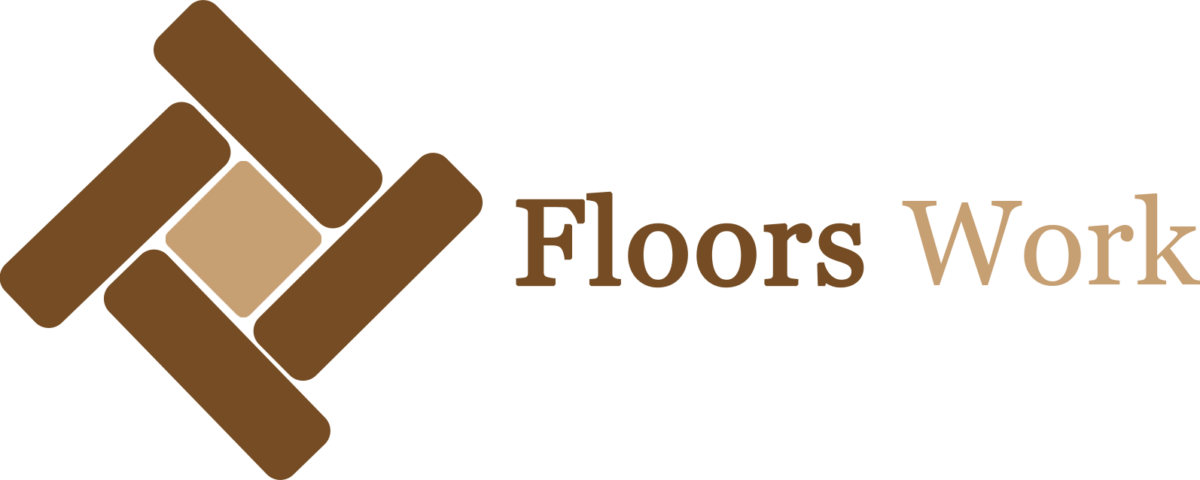Hardwood Flooring: Pros & Cons, Reviews, Cost, & Guides
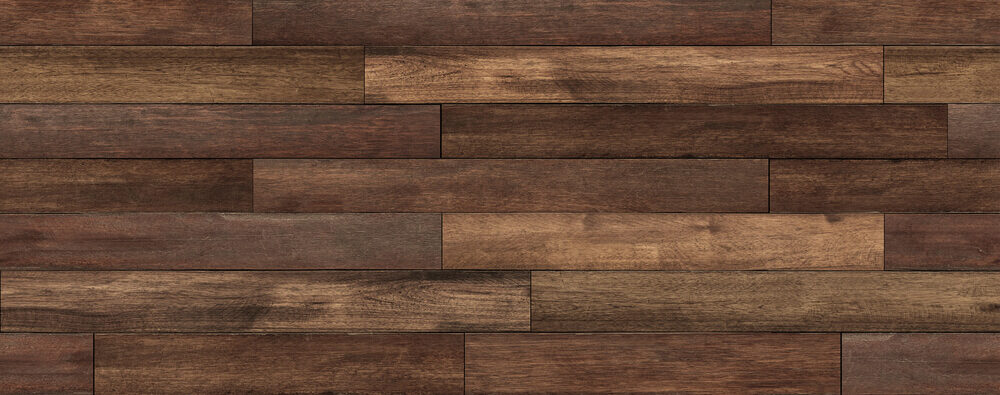
Want to install hardwood flooring at your place? You are going to make a great decision. Hardwood floors are the popular and timeless flooring choice for most of the homeowners. They add warmth and an aesthetic appearance to your home.
Remember, you must be aware of every minor to major detail about floors before finalizing them for your home. To remove this trouble, we have performed extensive research, consulted multiple flooring experts, gathered honest customer reviews for writing this ultimate guide.
In this guide, we will cover everything you need to know about hardwood floors, including the types of wood, installation, maintenance, repair, cost, and refinishing.
Hardwood Flooring Pros & Cons
Generally, hardwood floors are one of the favorite flooring options of homeowners. But they have certain pros and cons. Have a look at them;
Pros
1. Durability
Hardwood flooring is known for its durability and long-lasting nature. With proper care and maintenance, they last for decades or even centuries.
2. Can Be Refinished
Unlike most other types of wood flooring, hardwood floors can be easily refinished to get a brand new look. You can refinish hardwood floors one room at a time or even the entire home at once depending on your budget.
3. Aesthetics
Hardwood flooring is considered beautiful and adds an elegant touch to any space. It comes in a variety of colors, textures, and patterns which make them versatile for different styles and preferences. Their different colors create multiple trends and visually appealing flooring designs.
4. Easy to clean & maintain
These floors are relatively easy to clean and maintain. Different flooring products can be easily used on them. You can use sweep, broom, vacuum, or mop to remove dirt, dust, and stains. Make sure you take care of your floors from day one. Use mats under pets dishes. This will help you in easy cleaning and long lasting of your floors.
5. Increases home value
Installing hardwood flooring gives an entirely new look to the home. It increases the value of your home, making it more attractive to potential buyers.
6. Allergy-friendly
Hardwood floors are a savior to those who suffer from allergies. They naturally repel mot of the allergens which is why Asthma And Allergy Foundation Of America recommends hardwood flooring for asthma patients
7. Versatility
They can be installed in different areas of the home, including living rooms, dining rooms, bedrooms, and hallways.
Cons
Cons of hardwood flooring are never the deal breaker. Have a look at them;
1. Cost
They can be slightly expensive, especially if you opt for installing in the entire home by some specific species like exotic or rare woods. However, this cost can be reduced, when you install them in one or two rooms. Another option can be buying leftovers from big companies at discounted prices. Besides all these, buying hardwood floors at their full price can still be a great investment.
2. Hard
Hardwood floors sometimes feel hard to feet and may cause foot pain. This problem can be overcome by using a soft and comfortable mat under your floor or using a carpet or rug over the floors.
3. Susceptible to water damage
They are susceptible to water damage and can warp, buckle or rot when exposed to moisture. This makes them less suitable for areas with high humidity or moisture, such as bathrooms, basements and kitchens. Make sure to install a vapor barrier under the hardwood flooring in damp areas.
4. Difficult Installation
Hardwood flooring is difficult to install. Remember, wood is a natural material which undergoes expansion and contraction. This is why these floors must be installed professionally while taking care of this natural phenomenon, planks placement, and transitions. This is not a DIY job without any experience.
5. Can Be Noisy
They produce creaky noise due to improper installation and weather changes. It sometimes gets so loud and irritating. This issue can be solved by perfect installation leaving gaps for expansion and contraction.
6. Susceptible To Scratches And Dents
Hardwood flooring is prone to scratches and dents, especially if heavy or sharp objects are dropped on them or you have a pet at home. But this is not something to worry about. Most of the scratches can be easily removed by slight sanding. In addition to this, scratches add some character to your place that looks visually appealing.
————————————————————————–
Types of Hardwood Floors
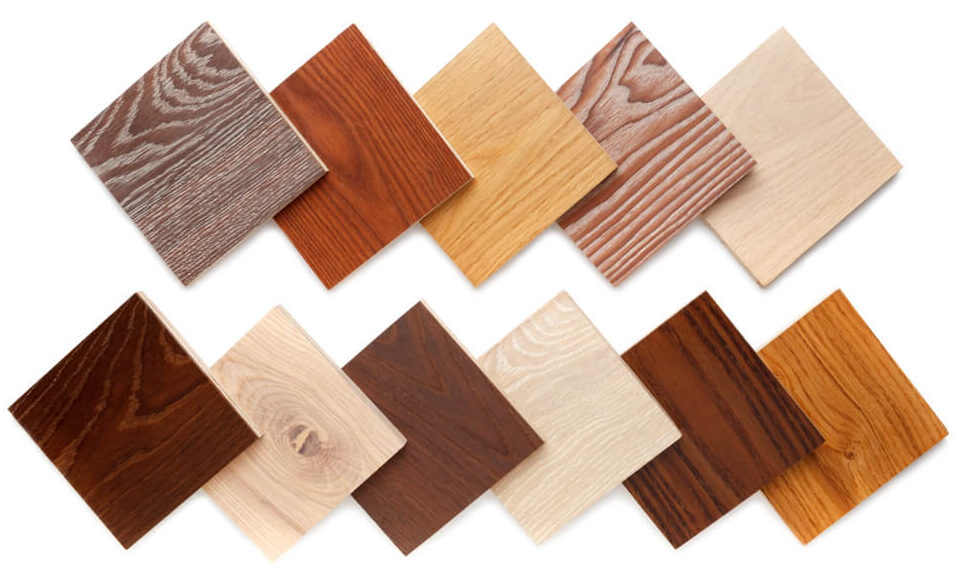
Hardwood flooring is classified into following different types depending on various important factors. Have a look at these wood flooring types;
Solid Vs. Engineered Hardwood Floors
Given below are two basic types of hardwood flooring;
1. Solid Hardwood Floors
They are made from a single piece of wood and are typically 3/4 inch thick. They are available in a variety of wood species, including oak, maple, and walnut, among others. Solid hardwood floors are installed using nails or staples. They can be sanded and refinished several times over their lifespan.
2. Engineered Hardwood Floors
They are made up of multiple layers of wood planks that are glued together. The top layer is a solid wood board, while the bottom layers are made from a plywood base. They are typically thinner than solid wood floors, ranging from 1/4 inch to 5/8 inch thick. They can be installed using a variety of methods, including glue, nails, or floating, and they can also be sanded and refinished, but not as many times as solid hardwood floors.
On the basis of wood cutting pattern
There are four main types of hardwood flooring based on the cut pattern:
1. Plain Sawn
Plain sawn (also known as flat sawn) is the most common cut pattern for hardwood flooring. This cut produces a traditional, cathedral-like grain pattern with a mix of straight and curved lines.
2. Quarter Sawn
Quarter sawn floors are cut at a 90-degree angle to the growth rings, producing a straight grain pattern. They are uniform and more stable than plain sawn wood.
3. Rift Sawn
Rift sawn floors are cut at a 30- to 60-degree angle to the growth rings, producing a straight grain pattern. They are more uniform than quarter sawn wood.
4. Live Sawn
Live sawn floors are cut straight through the log, producing a mix of all three grain patterns: plain sawn, quarter sawn, and rift sawn. This cut pattern showcases the natural beauty of the wood and produces a unique, one-of-a-kind look.
On The Basis Of Wood Species
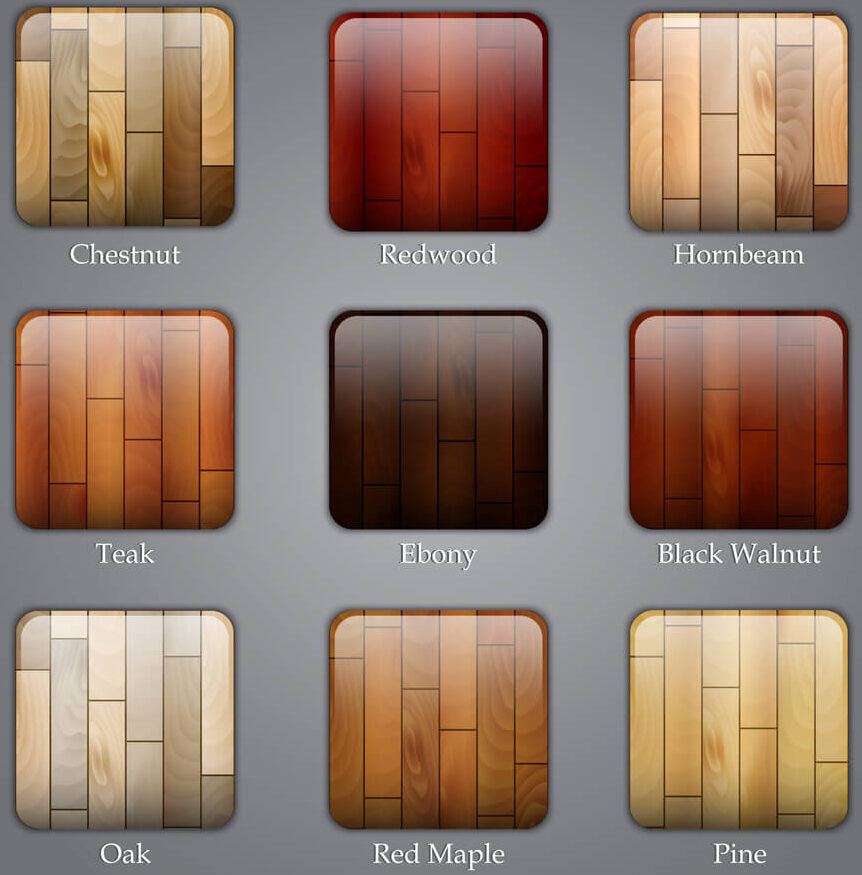
There are several types of hardwood flooring on the basis of wood specie, including:
1. Oak
Oak is a popular and versatile flooring option that comes in several varieties such as red oak and white oak. It is considered to be the most durable wood.
2. Maple
Maple is a durable and hard hardwood that is known for its light color and subtle grain patterns.
3. Cherry
Cherry floors have a warm, reddish-brown color and a distinctive grain pattern that makes them a popular choice.
4. Walnut
Walnut hardwood floors are known for their rich, dark color and unique grain patterns that create a luxurious look.
5. Hickory
Hickory is a tough and durable hardwood that is known for its rustic appearance and variations in color.
6. Mahogany
Mahogany is a premium hardwood that is famous for its reddish-brown color and fine grain patterns.
7. Bamboo
While technically not a hardwood, bamboo is a popular eco-friendly flooring option that is durable and comes in a variety of colors.
8. Teak
Teak is a dense and durable hardwood that is known for its resistance to moisture and decay, making it a great choice for bathrooms and outdoor spaces.
9. Ash
Ash wooden floors have a light, creamy color and a distinctive grain pattern that makes them a popular choice for contemporary and traditional interiors.
10. Birch
Birch is a durable and affordable hardwood that has a light, yellowish color and a fine, subtle grain pattern.
On the basis of finishing
There are several types of hardwood flooring based on their finish:
1. Unfinished Hardwood Floors
Unfinished floors are made from raw wood planks that have not been treated with any stain or sealer. They offer flexibility in terms of customizing the color and finish of the wood. They require sanding and finishing after installation.
2. Prefinished Hardwood Floors
Prefinished floors come with a factory-applied finish. They are cured under UV lights to create a durable surface. This eliminates the need for sanding and finishing after installation and provides a consistent finish across all planks.
3. Oil-Finished Hardwood Floors
Oil-finished floors are treated with natural oils such as linseed or tung oil. These oils penetrate the wood fibers to provide a matte and satin sheen finish that showcases the natural beauty of the wood. These floors require periodic re-oiling to maintain their appearance.
4. Water-Based Finished Hardwood Floors
Water-based finishes are a popular option for hardwood flooring because they offer durability and low VOC emissions. They dry quickly and do not yellow over time, providing a clear, matte or glossy finish.
5. Acid-Cured Hardwood Floors
Acid-cured finishes are the most durable and scratch-resistant finish for hardwood flooring. They are applied by professionals and require several days to dry and cure. These finishes provide a clear, glossy finish that enhances the natural beauty of the wood.
6. Hardwax Finish
Hardwax finish involves treating the wood with a combination of natural wax and oil. This finish also provides a matte finish. This is more durable than a natural oil finish. It is also water-resistant, making it a good choice for high-traffic areas or areas prone to spills. It requires periodic reapplication to maintain its appearance.
The choice between these types of finishes depends on personal preference, budget, and the level of durability required for the space.
————————————————————————–
How To Find High Quality Hardwood Floors
Selecting a hardwood flooring is one of the challenging tasks. You must be fully aware of the hardwood floor buying guide before visiting any local store or ordering flooring online. Given below are some of the important factors you need to consider while purchasing floors;
1. Research Reputable Brands And Manufacturers
Do some research on well-known brands and manufacturers that are famous for producing high-quality wood floors. Look for companies with a strong reputation for quality and customer satisfaction.
2. Check The Grade Of The Wood
Wood grade refers to the quality of the wood used to make the floors. Higher-grade woods will have fewer defects and imperfections, which can affect the overall quality of the floors.
3. Look For A High Janka Hardness Rating
The Janka hardness rating is a measure of a wood’s resistance to wear and tear. A higher rating indicates a more durable wood. Such wood is able to withstand heavy foot traffic and other types of wear and tear.
4. Check The Finish
Look for hardwood flooring with a high-quality finish. It protects the wood and keeps it looking great for years to come. A good finish will also make the floors easier to clean and maintain.
5. Consider The Installation Method
The installation method impacts the quality of the floors. Make sure you choose an experienced and qualified installer who uses the proper techniques and materials to ensure a high-quality installation.
6. Read Reviews And Ask For Recommendations
Look for reviews and recommendations from other customers who have installed hardwood flooring. This can help you get a sense of the quality of different brands and types of floors.
By following these tips, you can find high-quality floors that will be durable, beautiful, and add value to your home for years to come.
————————————————————————–
Hardwood Floors Care Guide
Hardwood floors may last a lifetime if handled and taken care of properly. From installation to their maintenance and repair, you must be very careful at every step. Have a look at the complete guide and care of floors;
Hardwood Floors Installation
Installing hardwood floors is a time-consuming process. You must know the right way to install them without any damage. Usually people seek help from professionals. But we are here to guide you on doing this tedious task yourself. Have a look at the following installation guide.
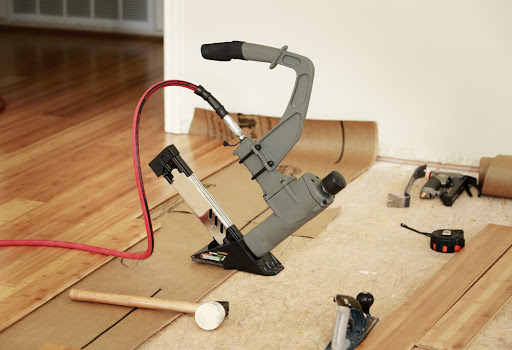
1. Acclimate The Hardwood
Leave the wood in the room where it will be installed for at least 72 hours before installation.
2. Prepare The Subfloor
The subfloor must be clean, dry, and level. Sand down high spots or use a self-leveling compound to level the subfloor.
3. Install The Vapor Barrier
Build a vapor barrier over the subfloor to prevent moisture from damaging the hardwood.
4. Lay The First Row
Start by laying the first row of hardwood against the longest wall in the room. Use a flooring nailer to secure the planks to the subfloor. Continue laying the hardwood by leaving a 1/2 inch expansion gap along the walls until you complete the whole room.
5. Cut And Install The Last Row
Cut the last row of hardwood to fit, leaving another 1/2 inch expansion gap at the end.
6. Install The Baseboard
Install the baseboard to cover the expansion gap and complete the installation. This will prevent your floors from creaking in winters.
Hardwood Floors Maintenance
Proper maintenance is essential to keep your floors looking their best. Here are some tips for maintaining and cleaning hardwood floors:
- Sweep or vacuum regularly to remove dirt and dust from your floors to prevent scratches.
- Clean spills immediately by wiping up to prevent permanent stubborn stains.
- Use a damp mop to brighten up your floors with. This technique is recommended by the manufacturers.
- Do not use excessive water when cleaning to prevent water damage.
- Use furniture pads under heavy furniture to protect your floors from scratches and dents.
- Refinish your floors every 10-15 years to restore their beauty and durability.
You can read more to know the complete cleaning guide, tools, and other helpful solutions for hardwood floors.
Hardwood Flooring Repair
Despite your best efforts, your hardwood floors may need repairs at some point. However they need less repair compared to other floors. Here are some common hardwood floor repairing tips:
1. Filling gaps
Use wood filler to fill gaps between planks caused by seasonal changes in humidity.
2. Fixing scratches
Use a wood marker or putty to repair small scratches. For larger scratches, you have to sand and refinish the area.
3. Warping
Warped boards should be replaced immediately. Ask a professional installer to remove them.
4. Water damage
Water damage can cause the wood to buckle or warp. Dry the area immediately as the water spills.
We also help our readers with hundreds of How to guides for easy maintenance and long life of any hardwood flooring.
————————————————————————–
Hardwood Flooring Cost
According to our research, wood flooring cost ranges from $3 to $12 per square foot for materials and installation costs ranging from $3 to $8 per square foot. Therefore, the total cost of hardwood floors can range from $6 to $20 per square foot.
This price varies depending on several factors, including the type of wood used, finish, the size of the area to be covered, stairs included or not, and the complexity of the installation.
In addition to this, always add 10% more to your budget while planning for hardwood floors. A detailed and perfectly-written hardwood flooring cost guide can help you get a complete price plan for you.
————————————————————————–
Best Hardwood Flooring Brands & Reviews
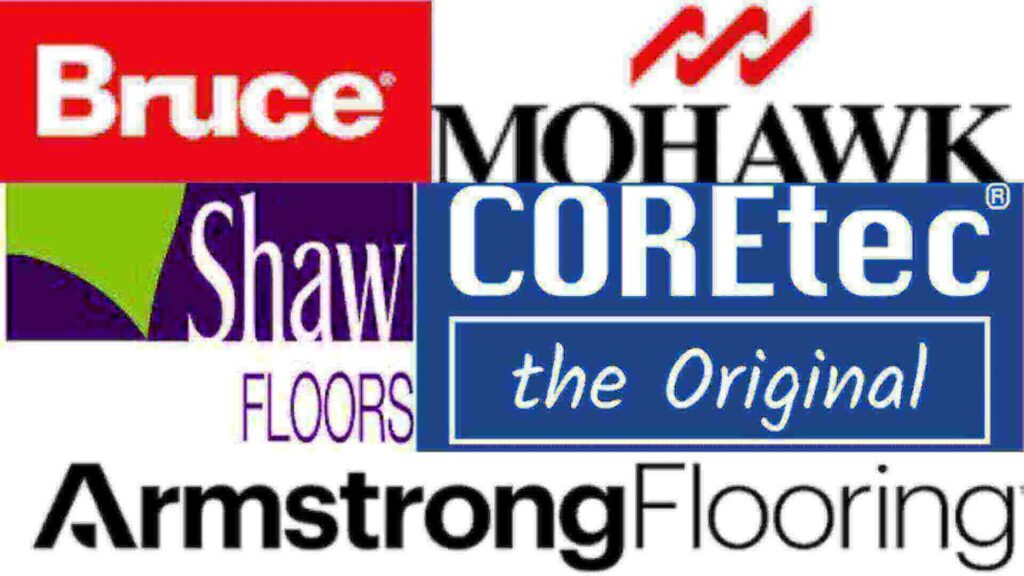
Hundreds of brands and manufacturers are available for hardwood flooring. But all of them are not reliable. You must be confused which brand we should opt for. We have made it easier for you.
After extensive research, we have compiled a list of top hardwood flooring brands that are a class due to their quality, best prices, and helpful customer support. Have a look at the most popular brands;
1. Armstrong
Armstrong Hardwood Flooring is a well-known brand in the flooring industry for over 150 years. It specializes in manufacturing high-quality hardwood flooring products. It is famous for using advanced technology for producing durable and stylish flooring options for both residential and commercial use. Its wide range of flooring options makes it a popular choice among homeowners and businesses looking for beautiful and long-lasting flooring solutions.
2. Mullican
Mullican Hardwood Flooring is a family-owned and operated brand that has been in business for over 30 years. The company is known for producing high-quality hardwood flooring products that perfectly fits the criteria of beauty and durability. The company uses sustainable forestry practices and ensures that all of its flooring products meet strict environmental standards.
In addition to its quality, Mullican also offers excellent customer service. The brand provides customers with support throughout the buying and installation process. Its commitment to customer satisfaction and environmental responsibility make it a popular choice among customers.
3. Shaw
Shaw Hardwood Flooring is a well-respected and reputable brand. It is famous for its commitment to innovation and use of sustainable practices such as using renewable energy sources and recycling materials. They focus on eco-friendly materials in its manufacturing process. Shaw is a popular choice for customers looking for environmentally conscious flooring options.
Shaw offers a wide range of flooring products, including solid and engineered wood options. They deal in a variety of finishes, textures, and colors. Their floors come in a variety of wood species such as oak, maple, and hickory, among others.
4. Lauzon
Lauzon Hardwood Flooring is a Canadian brand that has been working for over 30 years. The company is known for its commitment to serving their customers with high-quaity hardwood products throughout the world. They offer the best prices.
One of the standout features of Lauzon’s hardwood flooring products is their air-purifying technology. This helps to improve indoor air quality. Overall, Lauzon Hardwood Flooring is a brand that offers innovative and sustainable flooring options for customers seeking beautiful and long-lasting flooring solutions.
5. Mirage
Mirage Hardwood Flooring is a well-established brand known for their exceptional sense of style, aesthetics, and quality. One of the key features of Mirage’s hardwood flooring products is their innovative and patented technologies, such as the “Nanolinx” finish. This provides superior resistance to wear and tear.
Mirage offers warranty protection for its products which build trust among customers. Overall, It offers premium and sustainable flooring options for customers seeking quality, style, and durability in their flooring choices.
At Floorswork, you can read complete details about all the best hardwood flooring brands to have a strong knowledge over each flooring manufacturer. This will help you choose one depending on your requirements and preferences.
————————————————————————–
FAQs
What Is The Most Durable Hardwood Flooring?
The most durable hardwood flooring options are typically Brazilian Walnut, Brazilian Cherry, Hickory, and Maple. These hardwood species are known for their high hardness rating. This makes them resistant to wear and tear, scratches, and dents. They are ideal for high-traffic areas in homes and commercial spaces.
What Hardwood Floor Color Is Best For Resale?
Neutral hardwood floor colors are best for resale, such as light or medium brown, natural, or gray. These colors are versatile and can easily match with a variety of decor styles and trends. They make homes appealing to customers. Bold or trendy colors attract a few buyers which limit the potential resale value of a home.
What Is The Most Scratch-Resistant Hardwood Flooring?
Brazilian Walnut, Hickory, Maple, and Oak are the most scratch-resistant hardwood floorings. Brazilian Walnut is especially known for its exceptional hardness and resistance to scratches. This is why it is a popular choice for high-traffic areas in homes and commercial spaces. However, no wood flooring is entirely scratch-proof. It is still essential to take precautions to protect your floors from scratches and damage.
Which Is Better Solid Hardwood Or Engineered Hardwood?
The choice between solid hardwood and engineered hardwood depends on personal preferences and needs. Solid hardwood flooring offers a traditional look, durability, and can be refinished multiple times. Engineered hardwood is more stable and can be installed in highly moist areas where solid hardwood may not be suitable. It is less expensive with more trendy options.
What Is The Most Popular Wood Flooring?
Oak is the most popular hardwood flooring option due to its durability, versatility, and affordable cost. It is available in a variety of finishes, styles, and colors, making it easy to match with any decor. Other popular options include maple, cherry, and hickory.
What Type Of Hardwood Flooring Can Be Installed In A Basement?
Engineered flooring is the best type of wood floors that can be installed in a basement. It is made up of multiple layers of wood with a hardwood board on top, which makes it more resistant to moisture and humidity. Additionally, it can be installed as a floating floor. It allows easy installation and replacement in case of any water damage or other issues. However, it’s important to ensure that the basement is properly sealed and the subfloor is level before installing it.
Can I Install Hardwood Flooring Over A Radiant Heating System?
Yes, hardwood flooring can be installed over a radiant heating system. Engineered wood flooring is the best option for radiant heating systems since it’s more stable and less prone to warping. The flooring should be acclimated to the room’s temperature and humidity conditions before installation. Ensure that the radiant heating system is turned on gradually to prevent any damage to the flooring.
Can I Install Hardwood Floors Myself?
Yes, it is possible to install hardwood floors yourself, but it can be a challenging and time-consuming task. To do this on your own, you need to have the necessary tools and experience. It is also important to know the complete installation guide, follow the manufacturer’s instructions and properly prepare the subfloor before installation.
————————————————————————–
Conclusion
In a nutshell, Hardwood flooring is one of the popular flooring options which may last decades and decades if handled properly with great care. They are a great investment and add value to your homes.
Choose your floors wisely by considering all the factors mentioned above to enjoy a warmth and style in your homes. If you still have any questions or experience regarding hardwood floors, comment below. Our experts will be happy to hear and assist you.
